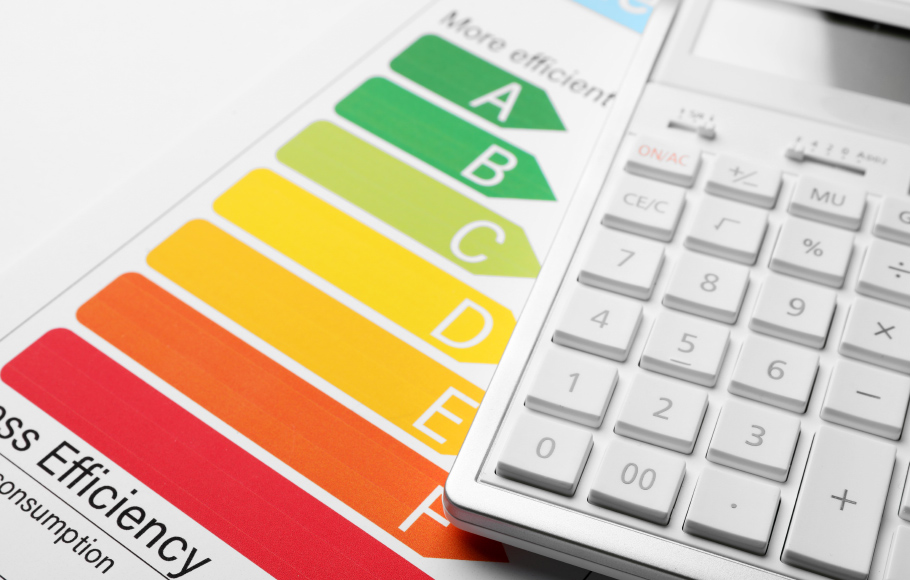EPCs are misunderstood, not misleading
At Elmhurst we always welcome analysis of energy used in buildings and the recent study from CarbonLaces has some really interesting results. However, as leading experts in the EPC sector, we would strongly advise caution to simply state that EPCs are misleading.
It is vital to understand that an energy assessment and the EPC is based on standard occupancy e.g. a family living in the property operating the home on set temperatures and running times. The EPC predicts the heating, hot water and lighting for the home based on average use patterns and average weather conditions.
They continue to serve their original purpose by enabling homebuyers or renters to compare the energy efficiency of properties and make informed decisions.
EPCs for homes were first introduced in England and Wales in 2007 as a cost metric, which meant that the A to G rating simply indicated how cheap or expensive a home would be to run. However, the recent study and article featured in The Times compared the EPC rating to energy consumption per square meter and carbon emissions.

One of the key findings within the study is that occupants of properties with EPC ratings of F and G consume less energy than the standardised occupancy expects. This highlights the importance of accurately measuring and understanding occupant behaviour in such properties.
As fuel costs continue to rise, many people are likely to have significantly changed their energy consumption habits at home. However, the most inefficient homes, which are also the most expensive to run, require additional information to fully understand the outcomes observed in this context. Were the occupants reducing their heating usage, adjusting the timing of heating schedules, or using alternative heat sources such as wood-burning stoves that are not metered? It is important to note that metered data also includes non-regulated energy such as cooking and running appliances, which the EPC does not account for.
Interestingly, homes rated EPC A and B, which are more energy-efficient, appear to have higher energy consumption by occupants than predicted by the EPC rating. This may be due to improved insulation, which makes occupants feel comfortable keeping the heating on for longer periods compared to older, less efficient homes with air leaks.
This study and article reinforces Elmhurst’s urgent call for greater clarity on this vital subject.
Understanding the asset and using standardised times and temperatures is the starting point for calculating energy usage. Predicted occupancy factors, such as the number of people, heating schedules, temperatures, and fuel costs, are then introduced to estimate how the occupants are likely to use the property.
Finally, metered data is compared to the predictions to determine if the occupants are using the property as expected. If there are discrepancies, experts can investigate possible factors, such as under heating, using alternative sources of heat e.g. wood burning stoves (that are not in metered data), or extreme weather conditions, that could significantly affect energy consumption.
Just last week, the EPC methodology was updated with more up to date fuel prices to improve the accuracy of the energy consumption and savings from heating, hot water and lighting. We acknowledge that it is essential to keep the methodologies up-to-date with fuel costs, carbon factors, and technological innovations.
However, it is important to note that while metered data is crucial, it must be understood in the context of the asset (the property and its occupants).

The EPC is just the starting point
Elmhurst’s Managing Director, Stuart Fairlie, Comments:
“Apples and Pears spring to mind here, as Elmhurst have advocated for many years that the EPC must give equal prominence to Cost, Carbon and Consumption. EPCs are currently limited to a cost metric, but are still used as a policy tool to reduce carbon emissions from housing and to tackle climate change. The good news however, is that the change to the EPC format is in the pipeline.
People need to be educated about the positives of understanding the energy performance of their home. The baseline EPC is the starting point, adding in the occupants predicted behaviour in the home will refine the predictions; and finally the metered data will check progress against the goals. All three are invaluable pieces of information about a home, but using one in isolation only tells a part of the story and doesn’t tell us where to focus improvements (We refer to this as the Golden Triangle in the Elmhurst Almanac)”
The Elmhurst Almanac
Answers to the questions raised above, and more, are available in our latest Almanac
DOWNLOAD NOW
